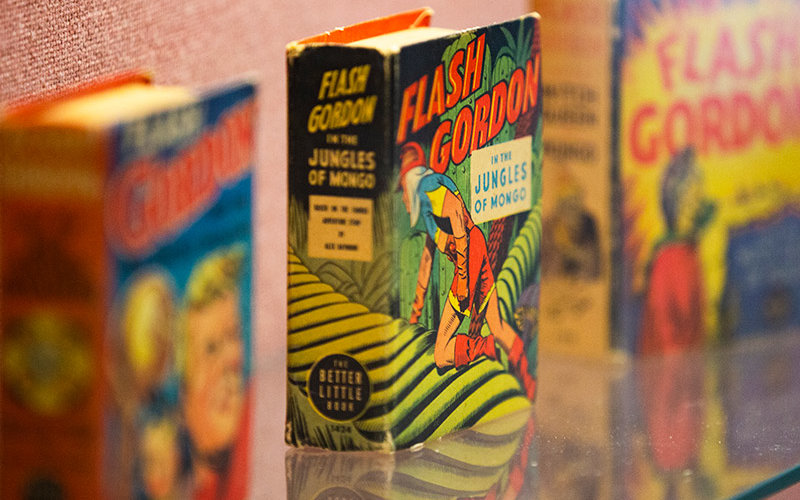
Ever heard of “Flash Gordon and the Monsters of Mongo,” “Buck Rogers and the Planetoid Plot,” “Jack Swift and His Rocket Ship” or “Maximo the Amazing Superman?” These are titles of “Big Little Books,” which were often the first introduction to literature (or at least a good story) for American children.
First published in 1932, the small and compact books were an innovative way to market popular stories to children and adults alike. Featuring artistic and colorful front covers, they told stories of the Wild West, comics, cartoons, radio shows, aviation, war, space travel and more.
With Pollak Library’s University Archives and Special Collections holding about 800 titles, a new exhibit “BIG Little Books: One Giant Leap” shares the wonder and delight of these vintage books, showcasing books about space adventures. The exhibit also commemorates the Apollo 11 lunar landing on July 20, 1969, and features Big Little Books about Flash Gordon, Space Ghost, Buck Rogers and more.
Robert Tomaszewski, science and engineering librarian; Trish Campbell, exhibit program coordinator; and Sarah Parramore, education librarian, teamed up to curate the exhibit, open through September.
Tomaszewski: In 1932, the Whitman Publishing Co. of Racine, Wisconsin, started publishing Big Little Books to give readers a significant amount of reading material and enjoyment (BIG) inside a (LITTLE) book. The front covers show historical perspectives of events and themes relevant at that time. For example, the Flash Gordon and Buck Rogers stories ignited the imagination about outer space during the 1930s and introduced the realism of science and technology through space exploration. Many illustrations for these stories were created by artists with the purpose of providing a glimpse into what the future may hold. Such was the case with the spacesuits and vehicles drawn from an understanding of aerodynamics.
Parramore: With so many Big Little Books in our collection, it was important to find common themes to highlight within the collection rather than select random titles to showcase. It was fascinating to see the popularity in space exploration grow through the ages and the different predictions made beginning in the 1930s. It makes an interesting connection between what they thought was going to happen — and what actually transpired.
Campbell: As we began exploring the university’s collection of Big Little Books, it became overwhelming. By focusing on Big Little Books about space and science, and combining the exhibit with NASA history as it relates to space, the exhibit has a broad appeal for children and adults alike. I hope people are inspired by this exhibit, and in some small way, it will continue to encourage women and others to explore the sciences and education.
The exhibit, open during library hours, is on the first floor wall case and fourth floor north display cases. The university’s special collections are available for use by faculty, staff, students and the public. For more information about the exhibit visit online.